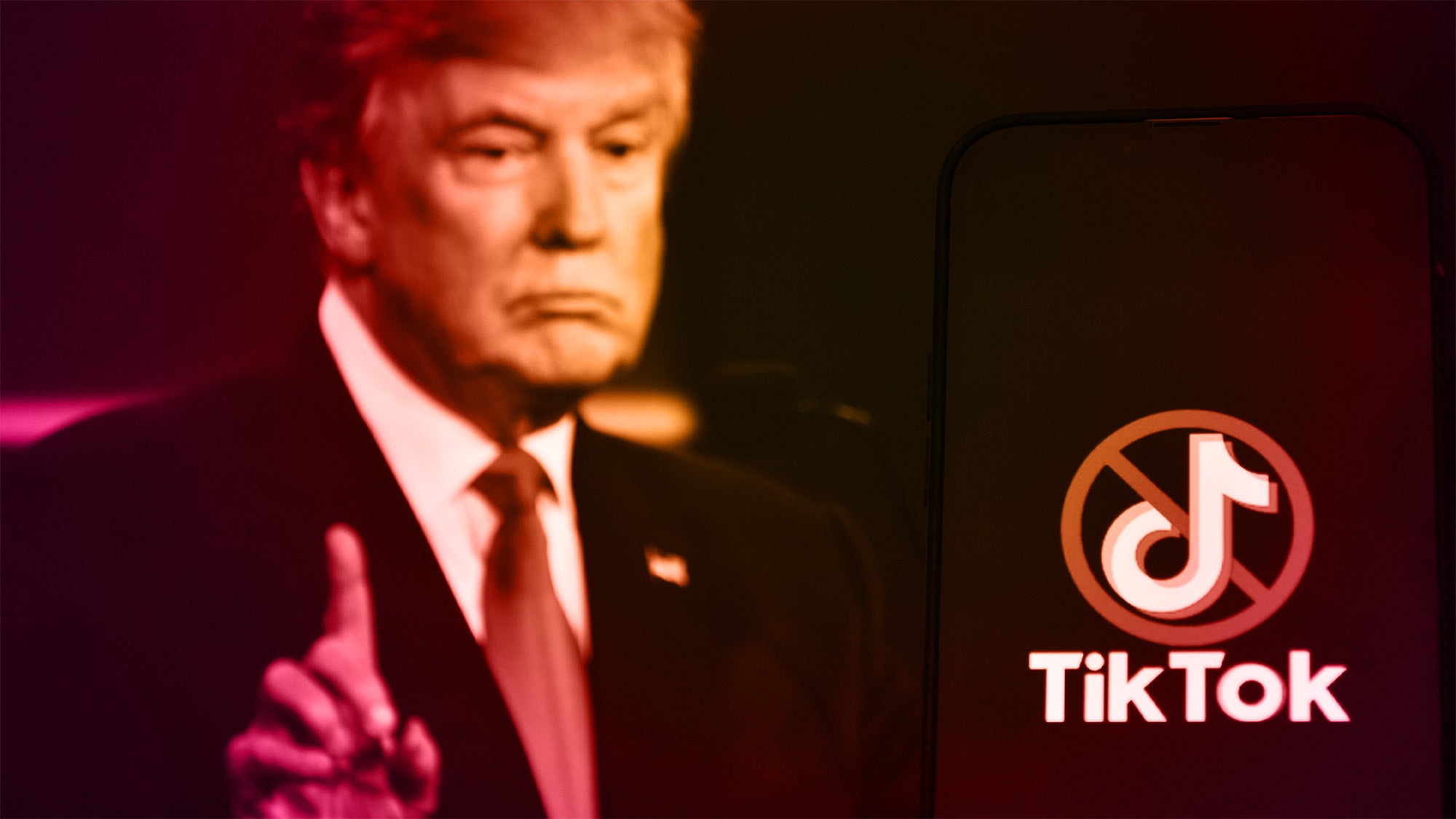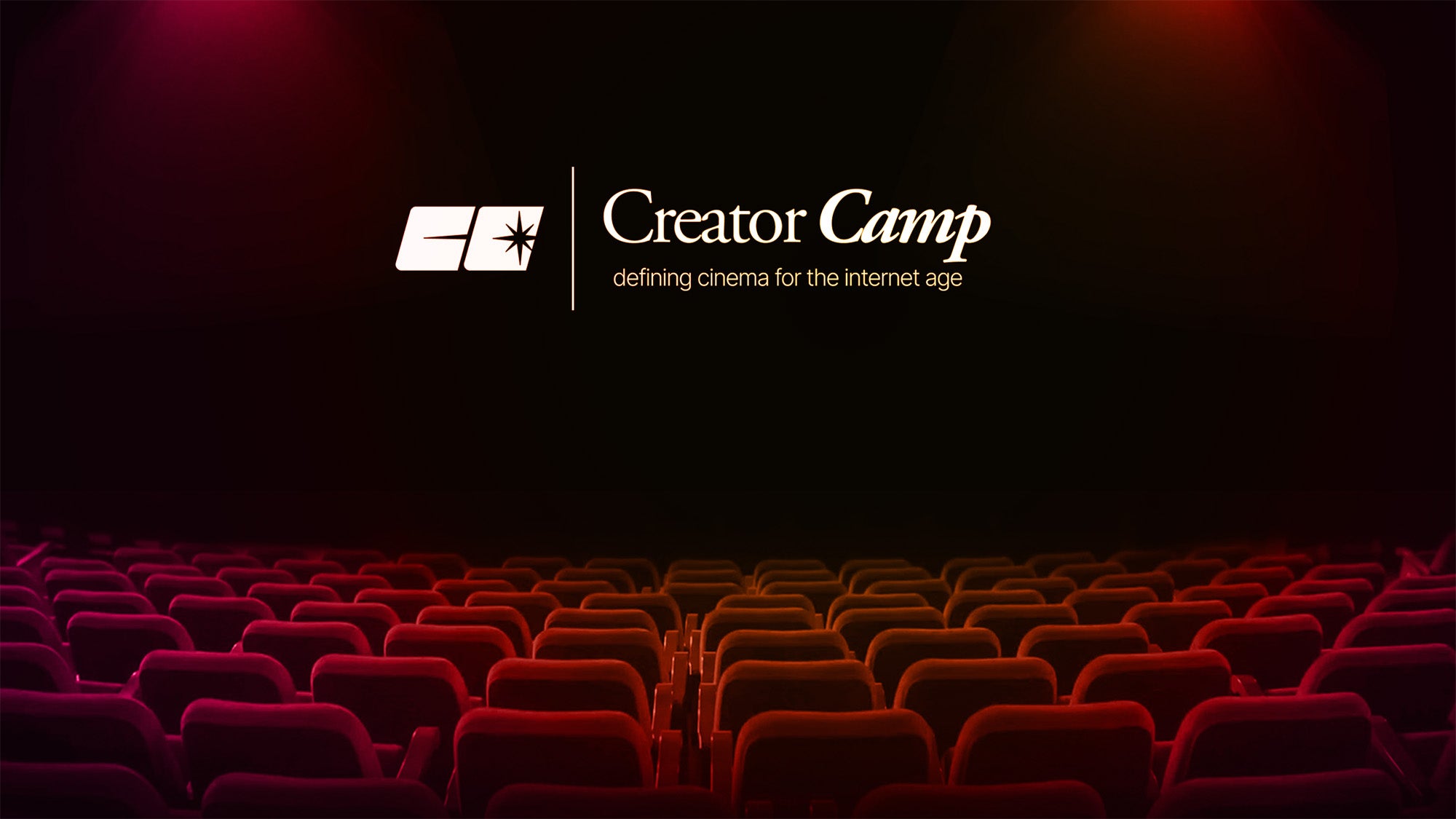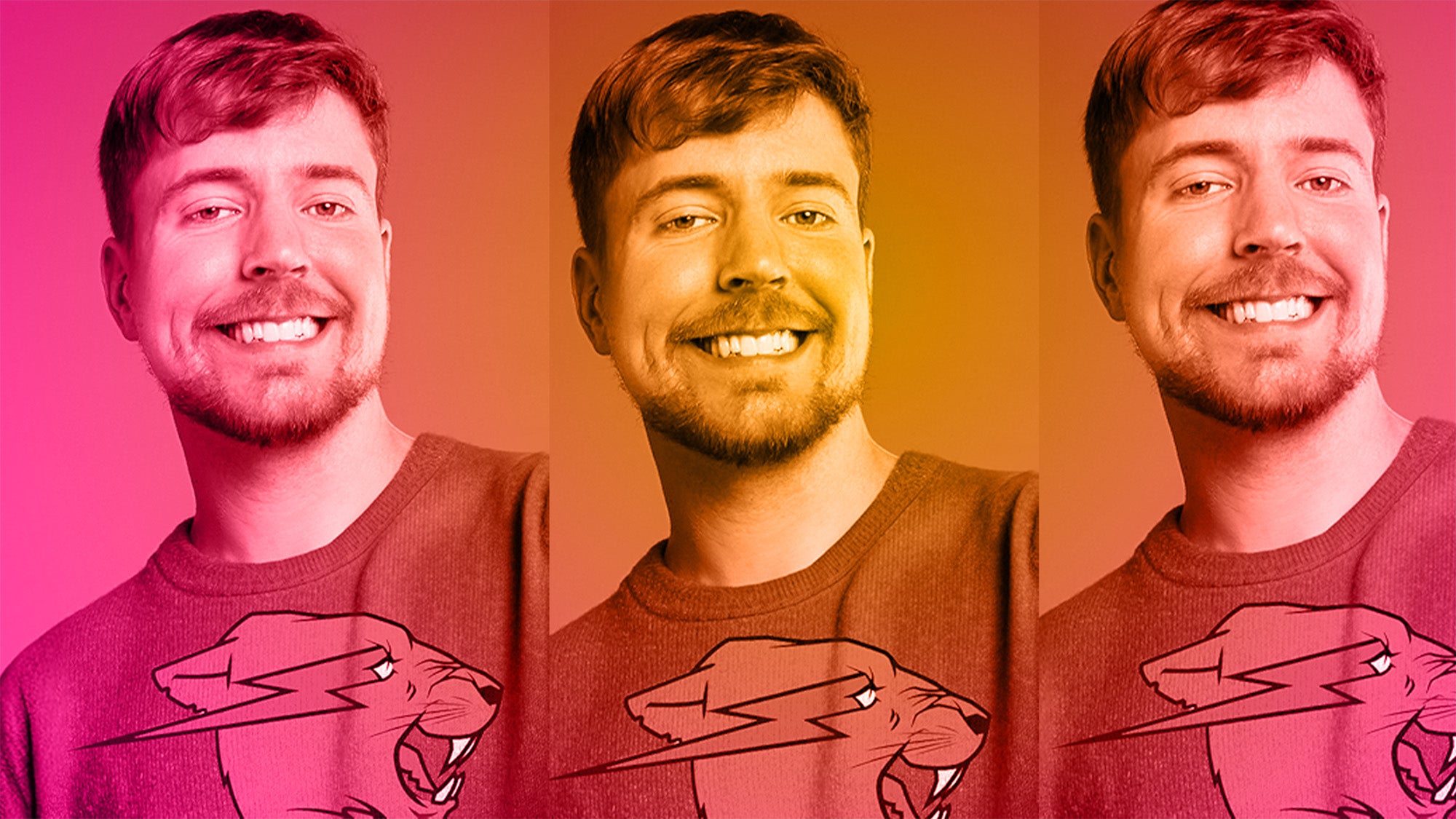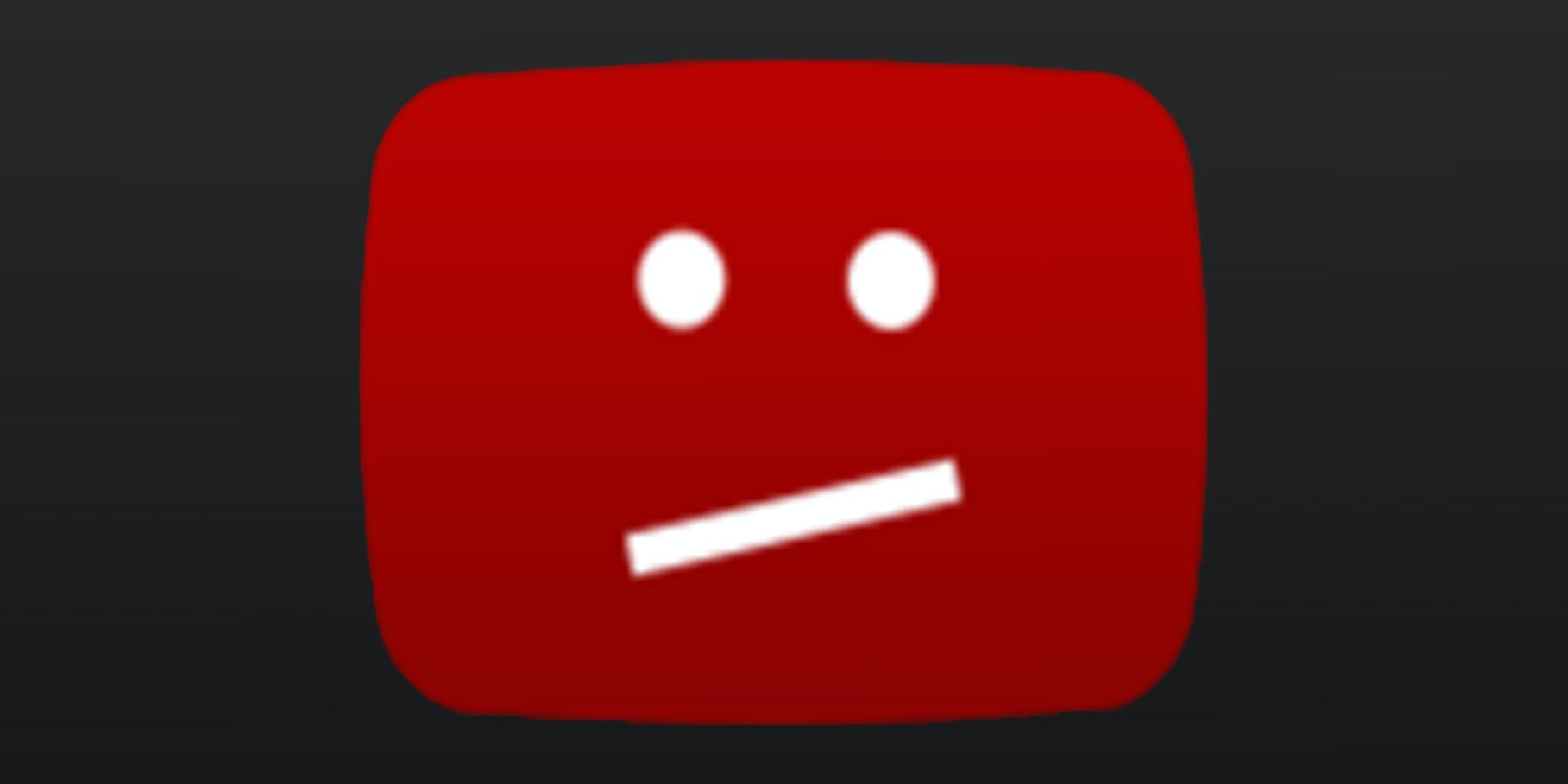
What happens when YouTube channels are terminated?
One of the drawbacks of uploading videos to a platform like YouTube is that the company can decide to suspend, demonetize, or terminate an account at any time if they determine the owner isn’t adhering to the terms of service.
Months or even years’ worth of content, gone from the internet in a heartbeat — it’s a fear many creators have, but it’s also something that can be avoided, usually just by paying attention and playing it smart.
Some basic things that can get your videos banned from YouTube:
- hate speech
- violent or graphic content
- harassment and cyberbullying
- malicious attacks
- predatory behavior
Seems pretty straightforward, right? Yet YouTubers still get banned for these things, and more.
Looking at creators who have had their channels terminated or otherwise restricted by YouTube, the reasons, and what lessons we can take away from their own bad behavior or misfortunes is a good step towards understanding what it will take to safeguard your own channel from consequences that could damage your livelihood and reputation as a content creator.
1) Logan Paul
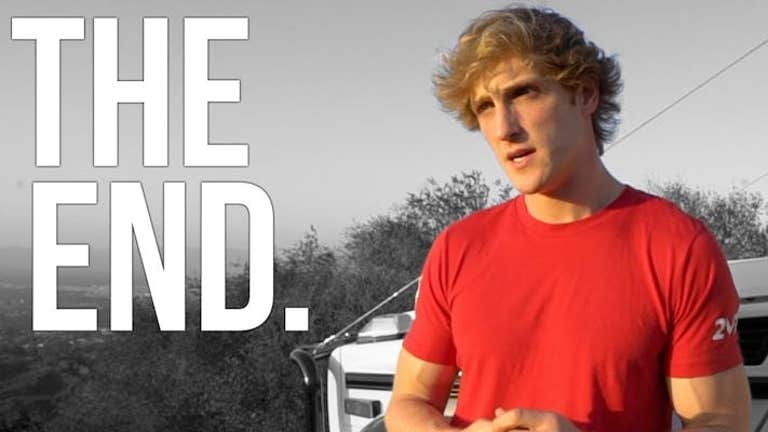
Subscriber count: 23.6 million
Reason for suspension: Paul’s account was temporarily suspended from running ads due to a “pattern of behavior” that YouTube deemed inappropriate for advertisers and “potentially damaging to the broader creator community.”
Who he is: Paul is a former Viner who has found success on YouTube, despite frequently courting controversy. His biggest misstep was the decision to upload a video taken in Japan’s “Suicide Forest” in which he and his friends stumbled upon the body of a man who had presumably taken his own life.
While that video didn’t result in Paul facing consequences from YouTube, it put him under increased scrutiny and likely played a role in the company temporarily suspending his ability to monetize videos in 2018, after sharing content in which he tasered a dead rat.
Is he back on YouTube? Yes, he never left.
What we can learn from this: What may seem innocuous or just “edgy” to one content creator may be deeply offensive or concerning to others — if you aren’t sure, it never hurts to run things by people who will tell you truthfully if posting something is a good idea or not.
At the end of the day, YouTube has a responsibility to a community of users, advertisers, and those with a financial investment in the company, and they will take action if a channel threatens their standing. What happened with Paul also demonstrates that drumming up a big enough controversy can also lead to a swifter crackdown against future content that may not have caused an issue in the past. Avoiding unnecessary controversy in the first place will keep creators in a much better position should any of their later content be on the fence in terms of what’s appropriate for the platform.
2) Veronica Bouchard / Evalion
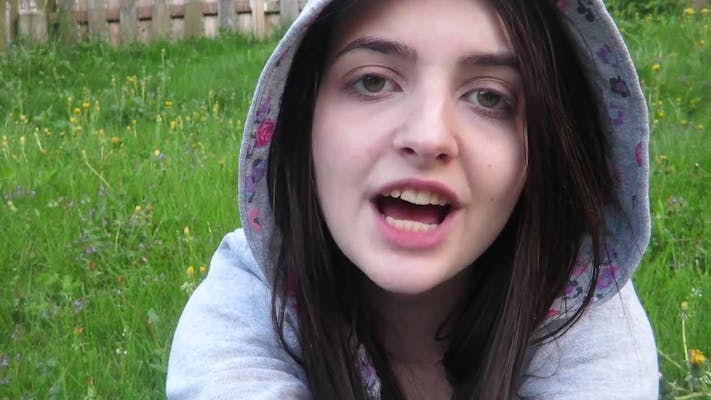
Subscriber count: 62,600 at time of ban
Reason for ban: Evalion was banned in 2016 after posting a series of videos praising Adolf Hitler and making racist comments. The official reason given by a YouTube spokesperson was that her channel “violated policies against hate speech.”
Who she is: Bouchard was 18 years old and known only by the username “Evalion” during the height of her brief online fame as a controversial YouTuber. Her videos seemed intentionally crafted to spark outrage, revolving largely around demonizing Jews, Black people, and feminists, suggesting the Holocaust “might not have happened,” and calling for a “white” Canada.
The YouTuber, deemed “The Most Racist Girl On All Of YouTube Ever” by a viral video calling her out before she was banned, gained notoriety in a very short period of time and drew a shocking amount of support around the time Nazism appeared to be on the rise once again. Her ban prompted outrage from supporters who insisted it was a violation of free speech, something which would become common in the following years as more and more social media platforms began banning high profile rightwing accounts that blatantly violated their terms of service.
Is she back on YouTube? No, although she reportedly attempted to use a backup account at one point.
What we can learn from this: “Don’t be racist” is a good start, but looking at the case of Evalion from a pragmatic perspective, the two things that jump out are that it’s important to have an understanding of the terms of service for the platform where you are sharing content and to remember that, while purposely stoking outrage has unfortunately become a profitable endeavor to a certain extent, there are limits.
While Evalion’s YouTube channel was ultimately terminated for hate speech, it can also serve as a reminder that building a brand on or utilizing rage bait of any kind innately welcomes a mob mentality and risks creating an echo chamber. The potential for a negative impact on a viewing audience and the content creator are obvious, and imperative to be aware of, but the quest to be more and more outrageous can also quickly lead to crossing lines that break rules and lead to deplatforming.
3) Calvin Lee Vail / LeafyIsHere
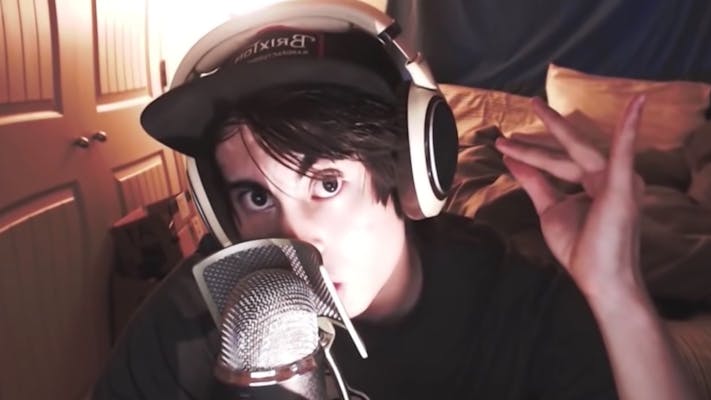
Subscriber count: 4.91 million at time of ban
Reason for ban: LeafyIsHere was banned for violating YouTube’s harassment and bullying policies.
Who he is: Vail built his YouTube brand on drumming up drama with other YouTubers. Sometimes, this involved him calling out genuine concerns (such as with Evalion and her blatant racism), whereas other times his videos appeared to just be mean-spirited and in service of little else other than stirring up controversy.
The YouTuber was frequently accused of encouraging fans to harass other creators, but though he was controversial and disliked by many, his ban did spark concern over whether building a brand on YouTube commentary would be feasible moving forward.
Is he back on YouTube? No. Vail tried to return to YouTube on several occasions, but those accounts were ultimately also terminated for ban evasion.
What we can learn from this: LeafyIsHere was banned as part of a crackdown by YouTube to better enforce policies against harassment of other creators. His videos often fell in a gray area of YouTube rules, and he was able to slide by without consequences for several years. However, his channel’s eventual termination is a reminder that just because rules aren’t vehemently enforced at one point doesn’t mean they won’t be eventually, and in this case, it all caught up with him very quickly.
Being aware of the terms of service, erring on the side of caution, and having an awareness of how your videos are influencing viewers to act and react are all efforts that will serve aspiring content creators well and help prevent a mad scramble to retroactively comply with rules when it may be too late.
4) The Martins / DaddyOFive / FamilyOFive
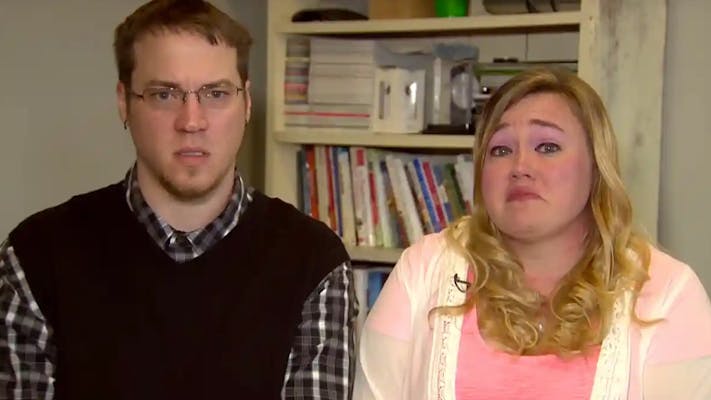
Subscriber count: 714,000 (DaddyOFive), 287,000 (FamilyOFive) at time of ban
Reason for ban: DaddyOFive was banned over “content that endangers children,” after the channel received several strikes related to violating YouTube’s terms.
Who they are: Mike and Heather Martin started their channel pulling pranks on their five young children. The pranks gradually became more and more extreme as the parents began encouraging the children to torment one another, prompting concern among viewers and the YouTube community.
YouTuber Philip DeFranco began making his own videos calling out the Martins for their “pranks,” and the courts eventually got involved. The Martins were charged with neglect of a minor, sentenced to five years supervised probation, and reportedly lost custody of two of the children.
They stopped creating videos on that channel as part of the probation, but later attempted a comeback under the name FamilyOFive, again focused on pranks. It was terminated in 2018.
Are they back on YouTube? Yes. The Martin Family channel holds a disclaimer, written from the perspective of their oldest child, that it is owned by “our Nana” and that the “parents were wrongfully, accused of things they did not do.” As Mike and Heather technically do not run the channel, despite appearing in videos, YouTube has not considered this ban evasion.
What we can learn from this: Prank videos and YouTube channels involving young children are both controversial genres, that have perhaps come under more scrutiny in recent years — and with good reason. While not mistreating children is an obvious lesson here, for anyone interested in starting a channel focused on pranks or family vlogging, it’s a good idea to envision the trajectory of such an endeavor. Are the pranks mean-spirited? Is there room for them to get bigger and more outrageous without causing damage? Are your children old enough to have a say in their own online presence?
This is also a good opportunity to remember that if the public wave of attention turns against you as you gain notoriety, you very well may be doing something wrong, or at least presenting your content in a way that begs concern. It’s not necessary (or good) to take every piece of criticism online to heart, but sometimes, listening is an opportunity to course-correct before it’s too late.
5) Onision

Subscriber count: 2 million
Reason for demonetization: Onision was removed from YouTube’s partner program after determining he was not using his “influence responsibly in the YouTube community and beyond.” This was likely at least in part due to a Discovery+ documentary that explored some of his more disturbing content, as well as allegations of violence and abuse.
Who he is: Onision has been one of the most controversial longtime YouTubers, having been on the platform since 2006. He has received backlash over his behavior in relationships, animal cruelty, concerning views about depression, accusations of rape and assault, and much more.
Is he still on YouTube? He did leave for some time in response to being kicked out of the partner problem, but appears to have returned to creating YouTube content this year.
What we can learn from this: Suspending or terminating a channel isn’t the only way YouTube can restrict a creator. Onision’s videos were not removed from the platform as a result of his channels being demonetized, but it likely had a major impact on his ability to make money as a content creator.
6) Dylan McEvoy / Durv
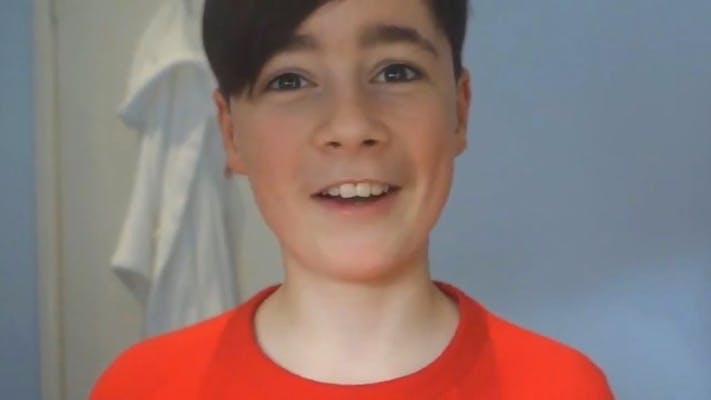
Subscriber count: 1.4 million at time of ban
Reason for ban: Durv claimed his account was banned for getting three strikes related to showing violence like “throwing a snowball at a car,” though others speculated it was related to his use of clickbait.
Who he is: Durv was a teen YouTuber who gained notoriety by luring people to subscribe to his channel and like his videos by promising they would be entered into drawings for free gift cards. He also used clickbait titles such as “MY SCHOOL IS DELETING MY CHANNEL.”
Durv was eventually called out for never actually doing any gift card giveaways, leading some to believe that “deceptive practices” may have been the actual reason for his account’s termination in 2017. Although he tried to make a comeback on a second channel a few days later, it was also terminated a few days later.
Is he back on YouTube? Sort of. Durv was able to get around the ban for a while by posting on his brother’s channel, which he claimed not to own. YouTube also eventually reinstated his account in 2018, although he has not been very active since.
What we can learn from this: Just because you can do something, doesn’t mean you should. Durv got an audience to engage with his videos, but he did so in a deceptive manner that ultimately burned his reputation, regardless of whether that is the reason his channel was terminated or not. There are ethical standards for content creators and moneymaking that can translate into consequences beyond just losing the platform itself.
Durv’s story also serves as a reminder that the internet is forever. When he attempted a comeback, the comments of his videos were immediately flooded with reminders of his gift card scam, and if he decides to take another swing at being a content creator as an adult, that’s an extra hurdle he will now have to overcome.
7) Alex Jones

Subscriber count: 2.4 million at time of ban
Reason for ban: Jones was initially prohibited from live streaming for 90 days after receiving a strike for violating YouTube’s terms prohibiting child endangerment and hate speech. He then evaded that probation by live streaming on other channels, resulting in his account being terminated.
Who he is: Jones is a right-wing provocateur notorious for promoting unhinged conspiracy theories to his massive audience. Most famously, he repeatedly questioned the legitimacy of the Sandy Hook Elementary School shooting, resulting in the families of the victims being harassed and ultimately bringing defamation suits against him.
Is he back on YouTube? No.
What we can learn from this: Jones wasn’t just banned from YouTube. His content was removed or restricted from multiple platforms, including Apple, Facebook, and Spotify, all around the same time in 2018, after prior suspensions and warnings went unheeded.
In addition to avoiding hate speech, aspiring content creators should also take Jones’ termination as a reminder that there’s a difference between discussing conspiracy theories and actually peddling them to an audience, particularly when there are real-world consequences to be had. Jones’ deplatforming across the internet also highlights how quickly a brand can be dismantled and an income disappear when the problem is so deeply intertwined with both the content and the creator.
8) Nico Kenn De Balinthazy / SNEAKO
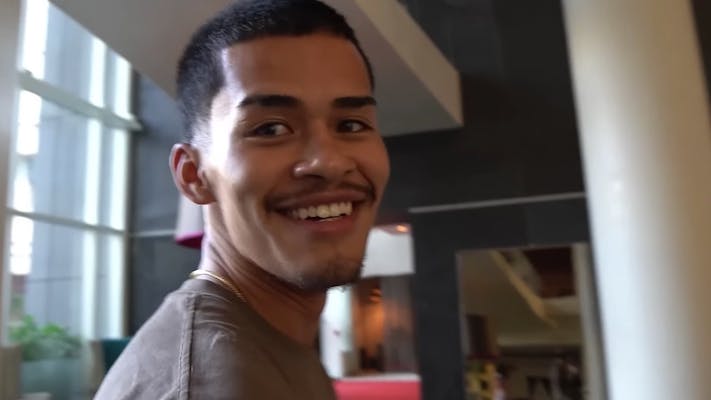
Subscriber count: 1.2 million
Why did Sneako get banned from YouTube? Both of Sneako’s channels were banned for “severe or repeated violations” of YouTube’s Community Guidelines in October 2022. One of his channels had previously received a strike for harassment — his second in 90 days — which prohibited him from uploading for 14 days. A statement from YouTube later insinuated Sneako tried to get around the ban by uploading to a second channel, which is against policy.
Who he is: Sneako initially joined YouTube as a young teen, going on rants and giving motivational speeches, often while playing video games. He later moved away from the gaming aspect of his channel and began drumming up controversy encouraging random people to say the N-word and getting into feuds with other YouTubers. He became increasingly rightwing, sharing disconcerting views about gender, race, mental health, the pandemic, and other hot topics, and started going out of his way to mock and harass others online who didn’t share his beliefs. Shortly before his ban, Sneako had also taken up with rightwing figures such as Andrew Tate, and later joined Kanye West’s latest campaign for the presidency.
Is he back on YouTube? No. And he has also been banned from Twitch.
What we can learn from this: On a practical level, Sneako’s attempt to circumvent the restrictions placed on his account by utilizing another one serves as another reminder to be aware of the rules put in place by YouTube, Twitch, or any other social media platform, particularly regarding an account that has already received warnings for breaking the terms of service.
His devolution from motivational speeches into mockery and harassment is also a warning to aspiring creators to be aware of the company they keep and the collaborations they pursue. Sneako’s pursuit of social media clout led him to be more and more outrageous, in ways that were initially defended as just jokes or pranks, only for it to become clear that he had fully embraced the toxicity of rightwing extremism.
One final thing we can learn from Sneako is that making a career as a content creator benefits tremendously from both a plan and a level of self-awareness. Many successful creators grow and adjust for both trends and their own interests, but approaching YouTube with nothing more than the intent to do whatever it takes to get attention not only leads to questionable choices that can reshape your trajectory as a human being, but an impulsivity that could result in your accounts getting banned because short term ragebaiting seemed more appealing than long term career building.

